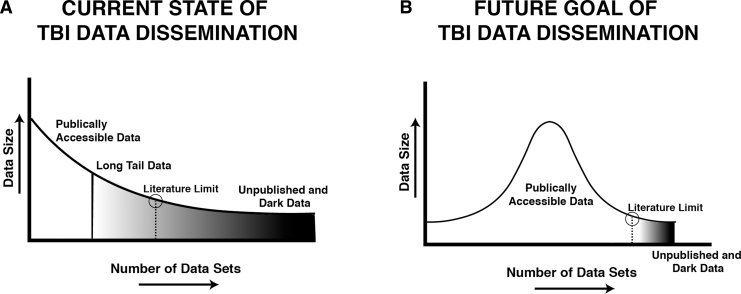FIG. 1.
Shortening the long tail of dark data for traumatic brain injury (TBI) research. (A) The current state of TBI data consists of a relatively small number of large, publicly accessible datasets reflected schematically as a right-skewed distribution. The majority of data collected by the field exists in the long tail of the distribution, with most datasets consisting of relatively modest data sizes as either gray data that are difficult to access beyond summaries reported in publications; or dark data that are inaccessible, locked in non-digital formats. (B) The goal of digital data stewardship is to make TBI data Findable, Accessible, Interoperable, and Reusable (FAIR),56 thereby shortening the long tail of dark data, and making a greater proportion of the data in the TBI literature publicly accessible to drive new discoveries and accelerate translation.

